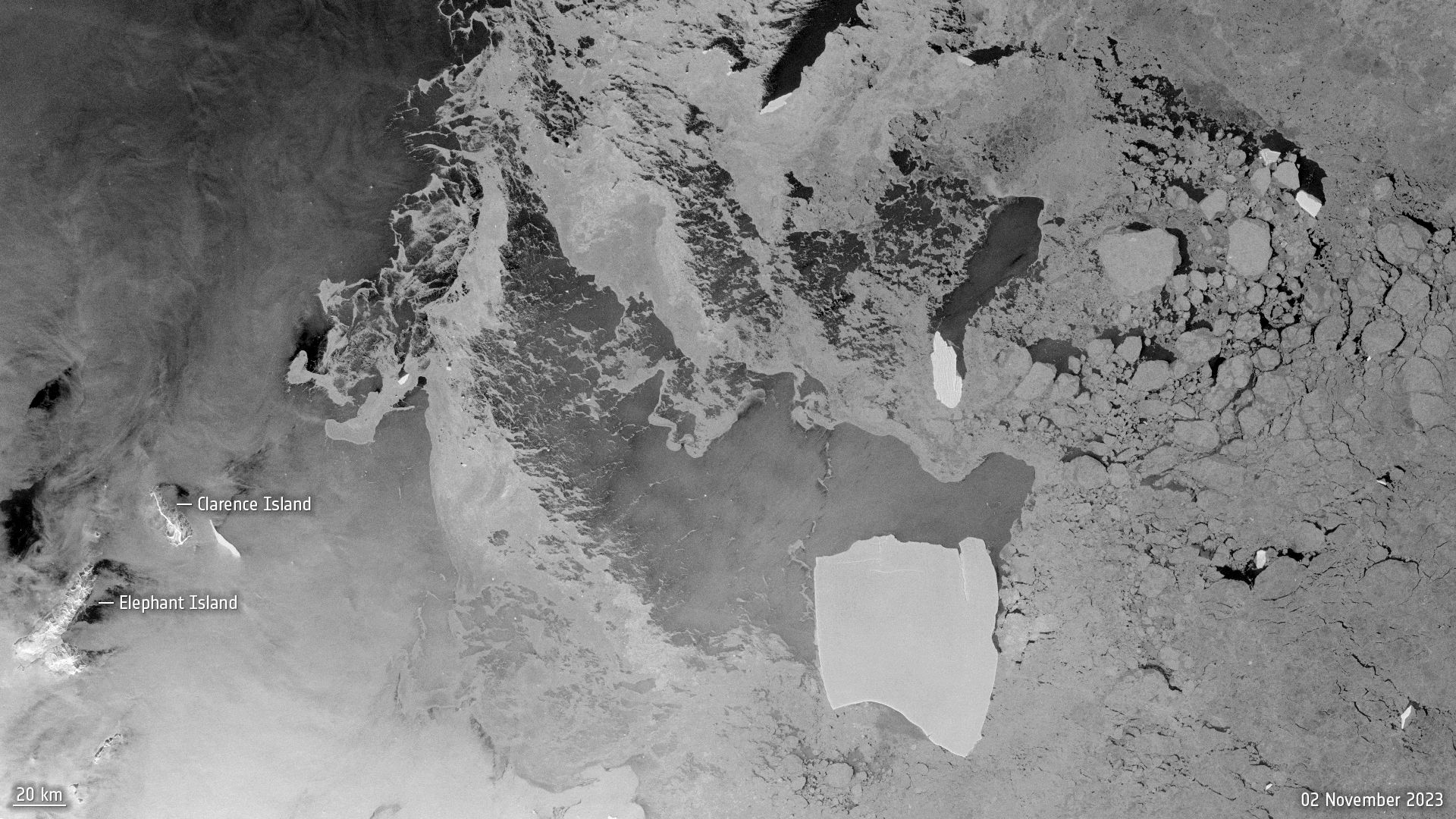The ESA published the images taken by the Sentinel-1 spacecraft. They demonstrate the drift of a giant iceberg known by the designation A23a.

A23a was formed in 1986. It broke off from the Filchner ice shelf in West Antarctica. Its area was 3,900 km2, which made it one of the largest icebergs in history.
However, the iceberg did not go far from the place of its birth. It clung to the bottom of the Weddell Sea and remained in the same place for the next three decades. Everything changed in November 2023, when offshore currents finally shifted a giant block of ice. As a result, the iceberg the size of Long Island was carried out to the open sea.

The animation, made up of images from the Sentinel-1 satellite, demonstrates the “escape” of the iceberg. The photos were taken on November 2, 14 and 26, 2023. The iceberg is currently moving into the southern Atlantic Ocean. Once in warmer waters, it will begin to collapse quickly.
Fragments of the A23a are unlikely to create problems for shipping. However, if the iceberg runs aground near South Georgia Island, it may create problems for the millions of seals, penguins and other seabirds that breed on it. The huge mass of A23a can disrupt the animals’ usual feeding routes, which will not allow them to raise their offspring normally.
Earlier, we talked about how an iceberg the size of the Kyiv reservoir collided with an island.
Follow us on Twitter to get the most interesting space news in time
https://twitter.com/ust_magazine


